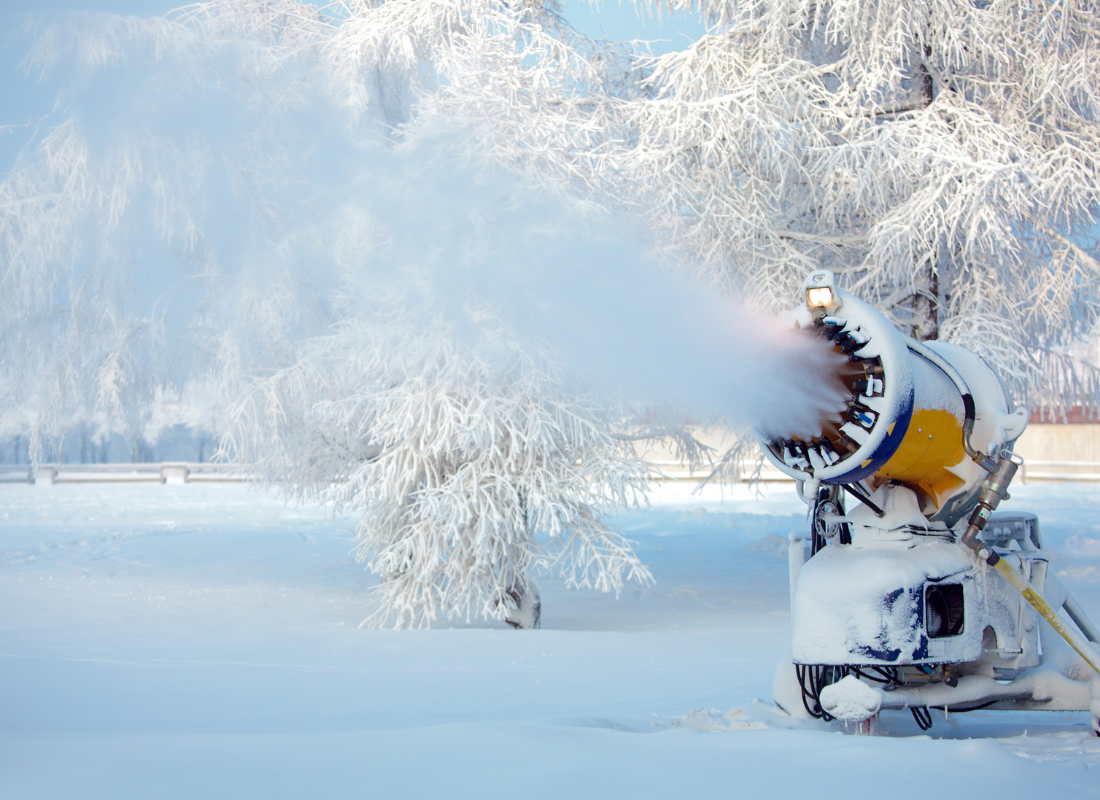
Ski tourism is a beloved pastime for many winter sports enthusiasts, offering excitement, adventure, and the allure of pristine mountain landscapes. However, in recent years, the environmental impacts of this industry have become a growing concern.
From the effects of climate change on snow cover to the environmental degradation caused by resort development, ski tourism faces numerous challenges. But there is hope. With sustainable practices, we can reduce the negative effects and preserve these environments for future generations. This article delves into the problems, solutions, and tips for fostering a more sustainable ski tourism industry.
Problems with Ski Tourism and the Environment
One of the most pressing problems facing ski tourism is the impact of climate change. Rising global temperatures are threatening the natural snow cover essential for skiing. According to the United Nations Environment Programme (UNEP), some ski resorts could see a reduction in snow cover by as much as 70% by the end of the century. Lower-altitude resorts are particularly at risk, as warmer winters lead to reduced snowfall and shorter ski seasons.
To compensate, many resorts turn to artificial snow production. However, this solution presents its own set of environmental issues. Artificial snow requires large amounts of water and energy, exacerbating the strain on local resources and contributing further to environmental degradation.
Snowmaking alone is estimated to account for up to 50% of a resort’s total water use. Additionally, large amounts of electricity are needed to power ski lifts, groom slopes, and maintain facilities, often sourced from non-renewable resources. This excessive consumption puts a strain on local ecosystems and contributes to carbon emissions.
 The construction of ski resorts can have devastating effects on local ecosystems. Clearing forests for ski runs, building lifts, and creating infrastructure such as hotels and roads can lead to habitat destruction. This reduces biodiversity and disrupts the habitats of local wildlife, from mountain goats to birds. Deforestation also accelerates soil erosion, which can lead to increased risk of landslides and degradation of the very mountains that draw tourists.
The construction of ski resorts can have devastating effects on local ecosystems. Clearing forests for ski runs, building lifts, and creating infrastructure such as hotels and roads can lead to habitat destruction. This reduces biodiversity and disrupts the habitats of local wildlife, from mountain goats to birds. Deforestation also accelerates soil erosion, which can lead to increased risk of landslides and degradation of the very mountains that draw tourists.
Popular ski resorts often suffer from overtourism, where the number of visitors exceeds the carrying capacity of the destination. This leads to overcrowding, strains on infrastructure, and pressure on local communities. The influx of tourists often drives up the cost of living, pricing locals out of housing markets and leading to economic disparities. Additionally, mass tourism can dilute the cultural identity of the region as global chains replace local businesses.
Solutions for Sustainable Ski Tourism
Some resorts are already taking steps to mitigate their environmental impact by implementing sustainable building practices. These can include using eco-friendly materials, minimizing deforestation, and designing buildings that blend into the natural environment. One example is the use of “green roofs,” which allow plants to grow on rooftops, helping reduce energy use and integrating buildings into the landscape.
Additionally, resorts can invest in renewable energy sources, such as wind, solar, or geothermal energy, to power ski lifts and facilities. For instance, Zermatt in Switzerland is known for its efforts to become one of the most sustainable ski resorts by utilizing solar panels and geothermal energy for its operations.
One of the largest contributors to the carbon footprint of ski tourism is transportation. Many resorts are located in remote areas, requiring tourists to travel long distances, often by car or plane. To address this, resorts can invest in better public transportation infrastructure, such as shuttle services from airports or train stations. Encouraging tourists to use buses or carpool can significantly reduce emissions.
Furthermore, ski resorts can implement “car-free” zones, where private cars are banned, as seen in the resort of Zermatt, Switzerland. This reduces traffic, improves air quality, and creates a more peaceful environment for visitors and locals alike.
 Ski resorts can take several measures to protect local ecosystems. For instance, they can work with environmental organizations to ensure that resort expansions do not harm vulnerable habitats. Wildlife corridors can be established to allow animals to move freely between areas, and tree planting initiatives can help combat deforestation.
Ski resorts can take several measures to protect local ecosystems. For instance, they can work with environmental organizations to ensure that resort expansions do not harm vulnerable habitats. Wildlife corridors can be established to allow animals to move freely between areas, and tree planting initiatives can help combat deforestation.
Resorts can also invest in better waste management practices to reduce pollution. Recycling programs, composting, and reducing single-use plastics can help limit the environmental footprint of ski tourism.
Resorts play an important role in educating visitors about the importance of sustainability. By raising awareness, tourists can be encouraged to adopt eco-friendly behaviors during their stay. Resorts can offer information on local wildlife and ecosystems, as well as tips on reducing their environmental impact, such as minimizing water use, avoiding littering, and respecting marked trails.
Tips for Skiers: How to Enjoy Skiing Sustainably
Choose Eco-friendly Resorts
When planning a ski trip, opt for resorts that prioritize sustainability. Many resorts now advertise their green credentials, whether through energy use, wildlife conservation, or waste reduction programs. Researching a resort’s sustainability practices before booking can make a big difference.
Travel Sustainably
Instead of driving to a resort, consider using public transportation. Many resorts are easily accessible by train or bus, which can reduce your carbon footprint significantly. If public transportation is not an option, try carpooling with friends or family to reduce emissions.
Pack Sustainably
When preparing for your trip, avoid bringing unnecessary single-use items. Opt for reusable water bottles, eco-friendly toiletries, and pack light to reduce the carbon footprint of your travel. Also, consider renting ski equipment locally instead of buying new gear, which can cut down on waste and support the local economy.
Respect the Environment
On the slopes, stick to marked trails to prevent damage to vegetation and soil. Avoid disturbing wildlife, and be mindful of your waste—always carry it out with you and dispose of it properly. Skiing responsibly means being aware of your surroundings and minimizing your impact on the natural environment.
Support Local Businesses
Supporting local businesses and artisans contributes to the local economy and reduces the reliance on global chains that often have higher carbon footprints. Eat at locally owned restaurants, buy souvenirs from local craftspeople, and engage with the culture of the area in a respectful and meaningful way.
Conclusion
Sustainable ski tourism is not just an idealistic goal but a necessary one to ensure the survival of the sport and the health of mountain ecosystems. From climate change and habitat destruction to overtourism and resource depletion, the ski industry faces many challenges. However, through sustainable practices—ranging from eco-friendly resort development and renewable energy use to better snowmaking techniques and responsible tourism—these challenges can be overcome.
By making conscious choices and working together, resorts, tourists, and local communities can help preserve the beauty of the mountains for future generations to enjoy.








